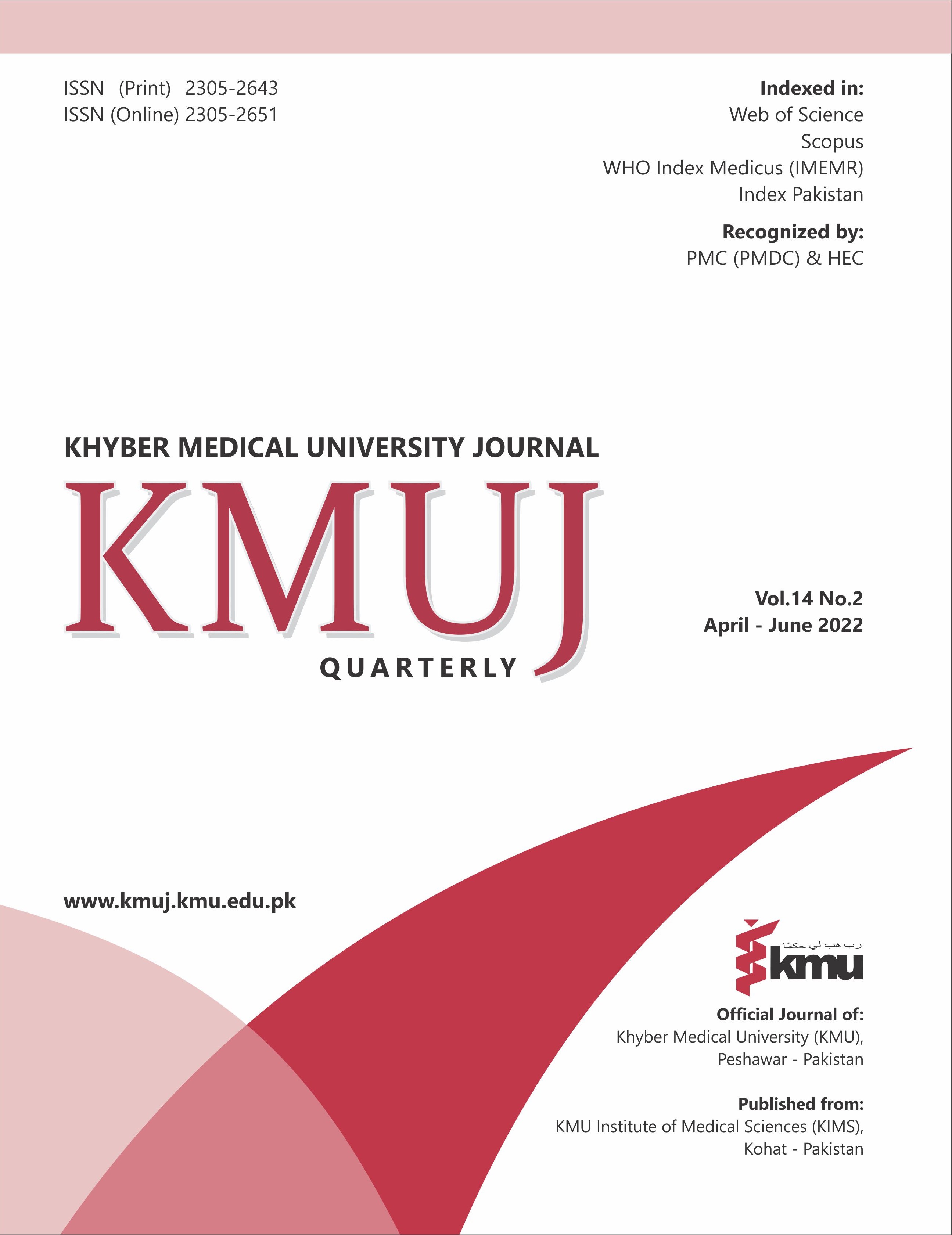STEROID-INDUCED GLAUCOMA IN YOUNGSTERS: A MAJOR PUBLIC HEALTH ISSUE OF NEAR FUTURE
Main Article Content
Abstract
Glaucoma is the leading cause of permanent and irreversible blindness. It has been estimated that in 2040, 111.8 million of the world’s population will be affected by glaucoma.1 The term "steroid responder" refers to those who have increased intraocular pressure (IOP) after taking steroids. Although the prevalence of steroid-induced glaucoma (SIG) is unclear, it is believed that among the general population, roughly 33% have moderate, while 4-6% have a high response of IOP elevation in response to steroids.2 SIG in youngsters is becoming a major public health concern.3 According to a study of pediatric glaucoma patients, SIG is responsible for 24 percent of all pediatric glaucoma cases.4 It accounts for 5.86 percent of all glaucoma patients in our country, which is a significant percentage.5 SIG causes irreversible blindness, which has far-reaching consequences for an individual's quality of life, family, and the healthcare system. Since Pakistan's healthcare system is not as advanced as that of other developed nations, preventing this disease is an alternate and effective strategy to reduce SIG-related blindness. Pediatric SIG prevention would not only save our health and human resources, but it will also enable patients to participate in the country's growth in their own right.
To prevent SIG-related blindness, there are a few actions that can be taken.
- Role of Ophthalmologist: If an ophthalmologist prescribes a topical steroid for an ocular problem, it is his or her responsibility to assess intraocular pressure (IOP), and perform a dilated fundus examination at 4–6 weeks.3 If the patient sees another ophthalmologist for a follow-up visit, the attending ophthalmologist should examine the patient's IOP and optic discs.
- Role of Allied Health Personnel (AHP): Allied healthcare professionals, such as physician assistants, and nurse practitioners, frequently prescribe steroids. Raised IOP is one of these medications' most harmful adverse effects. As a result, it's crucial that the healthcare team keep track of the patient's eye. When a patient visits an AHP, the AHP should measure IOP which can be done with a non-contact tonometer (NCT) or a Goldmann applanation tonometer. If the IOP rises, the AHP should refer the patient to a glaucoma specialist or ophthalmologist for further management.6
- Role of the Pharmacist: Self-medication is on rise in Pakistan with a frequency of 80.9-92.1% among the medical students.7 Steroids should not be provided without a proper prescription, and they should only be given for the duration of the treatment. Steroid supply without a prescription is a major issue in our system, and the government should take proper measures to combat it.
- Role of Physician: The unjustified and irrational use of steroids, particularly by general physicians in underdeveloped nations needs attention.3 If someone needs steroids for a non-ocular problem then the treating physician must involve an ophthalmologist in the patient care. Alternatively, the physician should use steroid-sparing agents in patients who are at high risk of developing glaucoma e.g. family history of glaucoma, high myopia, younger age, diabetes mellitus, or connective tissue disorders.
- Patient Education: The patient should be informed about the risks of glaucoma caused by steroids. Patients who self-medicate with steroids are showing a lack of understanding of the illness.3 This behavior ought to be avoided. They should be discouraged from using steroids for longer than the doctor recommends. They should be warned that self-medication can lead to SIG-related blindness that is irreversible.
In conclusion, if these preventive measures are not implemented promptly, we will see an increase in SIG-related blindness soon. Not only will our healthcare system be overburdened, but our country's economic growth would be slowed as well. The government bears primary responsibility for public health and for enacting measures that will boost the nation's productivity. To raise public awareness, the government and health authorities should bring this public health concern up at every opportunity, including through seminars, walks, talk shows, and newspaper advertisements. If they don’t act to prevent SIG-related blindness then who will?
Article Details
Work published in KMUJ is licensed under a
Creative Commons Attribution 4.0 License
Authors are permitted and encouraged to post their work online (e.g., in institutional repositories or on their website) prior to and during the submission process, as it can lead to productive exchanges, as well as earlier and greater citation of published work.
(e.g., in institutional repositories or on their website) prior to and during the submission process, as it can lead to productive exchanges, as well as earlier and greater citation of published work.
References
Tham Y-C, Li X, Wong TY, Quigley HA, Aung T, Cheng C-Y. Global Prevalence of Glaucoma and Projections of Glaucoma Burden through 2040 A Systematic Review and Meta-Analysis. Ophthalmology 2014;121:2081-90. https://doi.org/10.1016/j.ophtha.2014.05.013
Becker B, Hahn KA. Topical corticosteroids and heredity in primary open-angle glaucoma. American J Ophthalmol 1964;57(4):543-51. https://doi.org/10.1016/0002-9394(64)92500-0
Phulke S, Kaushik S, Kaur S, Pandav SS. Steroid-induced glaucoma: an avoidable irreversible blindness. J Curr Glaucoma Pract 2017;11(2):67-72. https://doi.org/10.5005%2Fjp-journals-l0028-1226
Kaur S, Dhiman I, Kaushik S, Raj S, Pandav SS. Outcome of Ocular Steroid Hypertensive Response in Children. J Glaucoma 2016;25(4):343-7. https://doi.org/10.1097/ijg.0000000000000209
Mahsood YJ, Naeem M, Ahmad H, Ullah I, Farooq S, Akhtar F. Clinical Audit of Patients Presenting at Department of Glaucoma as Part of Glaucoma Fellowship Program. Al-Shifa J Ophthalmol 2017;13(3):114-20.
Feroze KB, Khazaeni L. Steroid Induced Glaucoma. InStatPearls [Internet] July 17, 2021. StatPearls Publishing. Available from URL: https://www.ncbi.nlm.nih.gov/books/NBK430903/
Bukhari GM, Saleem HB, Maken ZH, Saleem S, Saleem T, Batool H. Frequency and causes of self-medication among the medical students of Federal Medical College, Islamabad, Pakistan. Rawal Med J 2022;47(2):412-4
